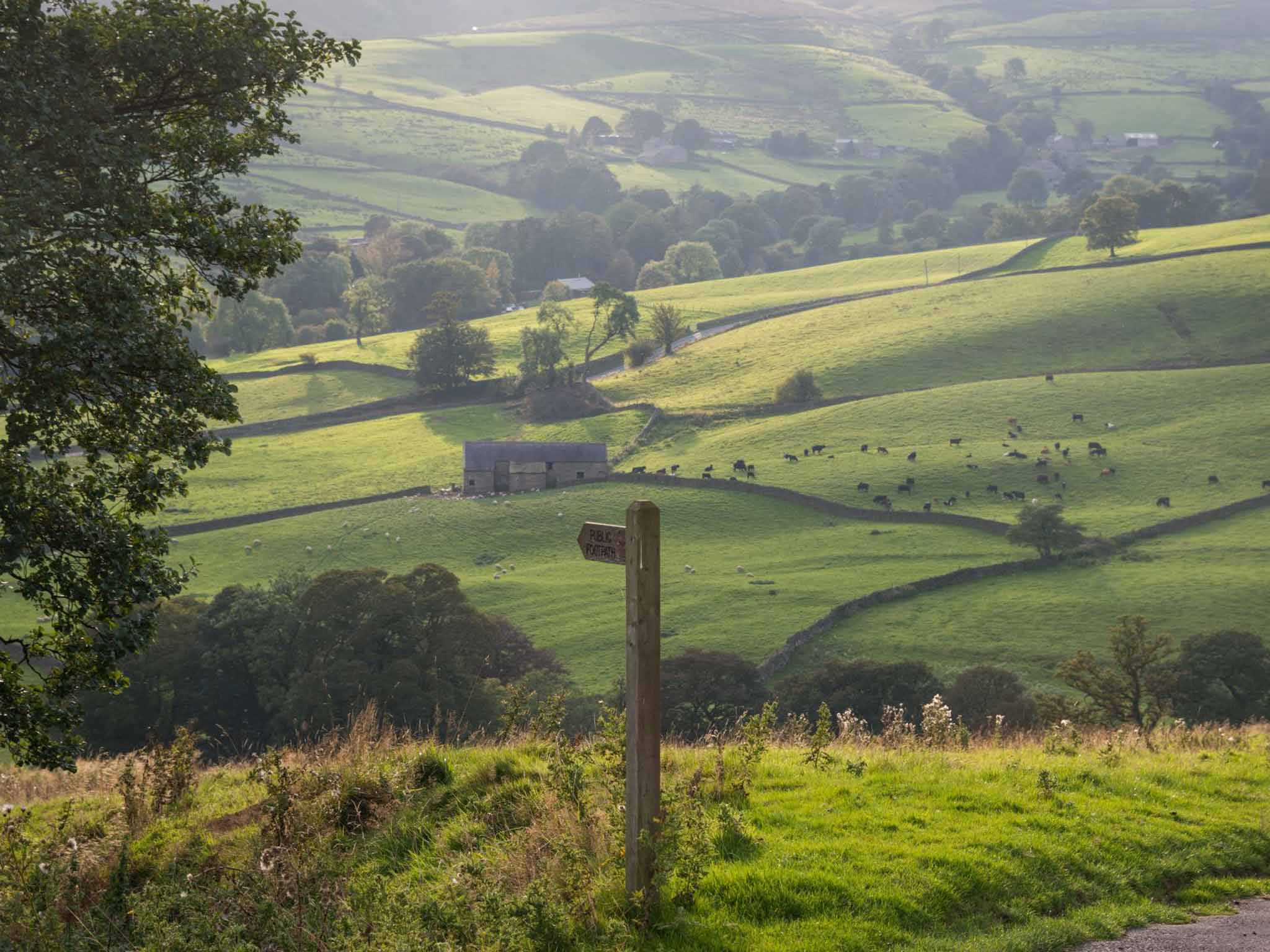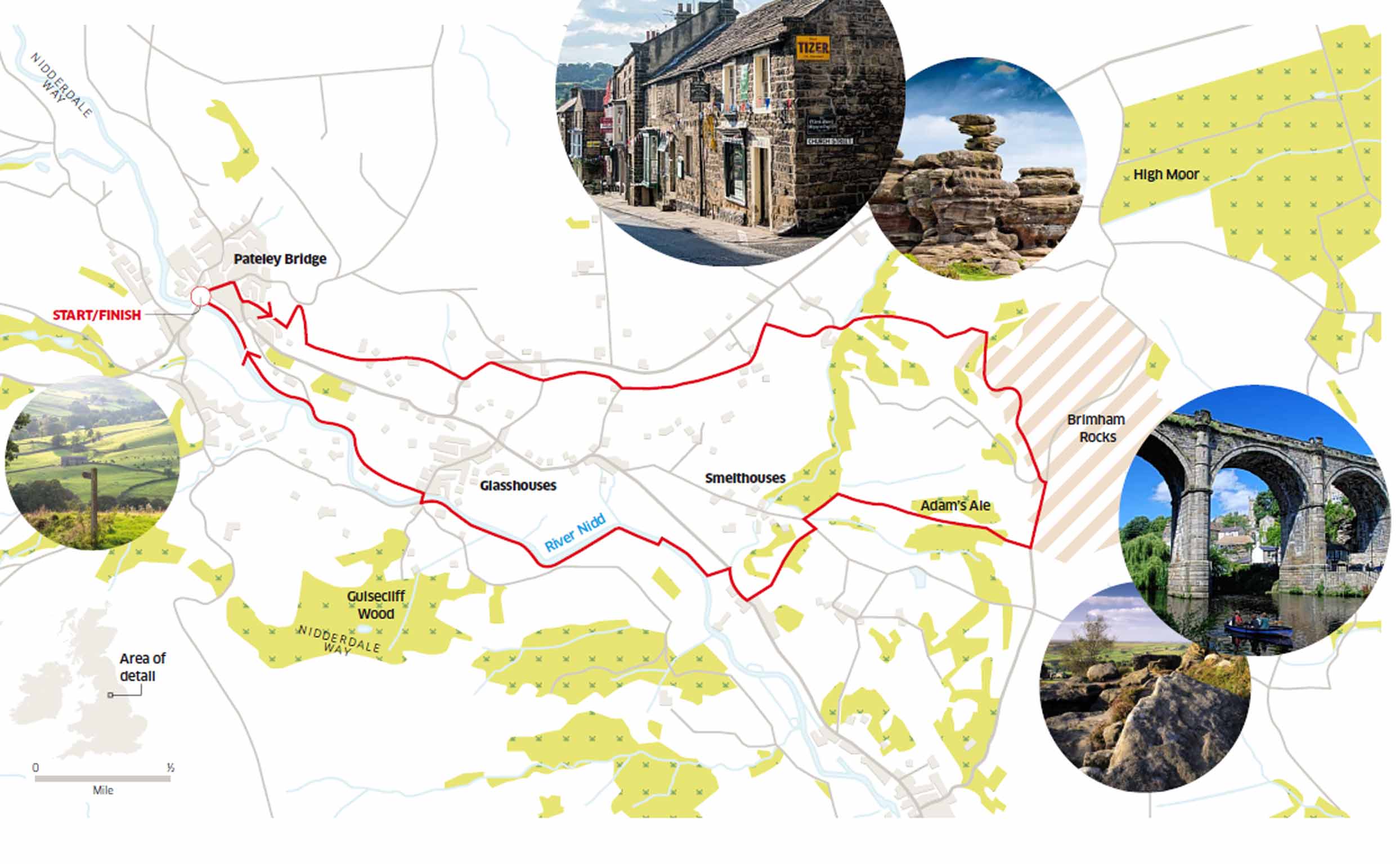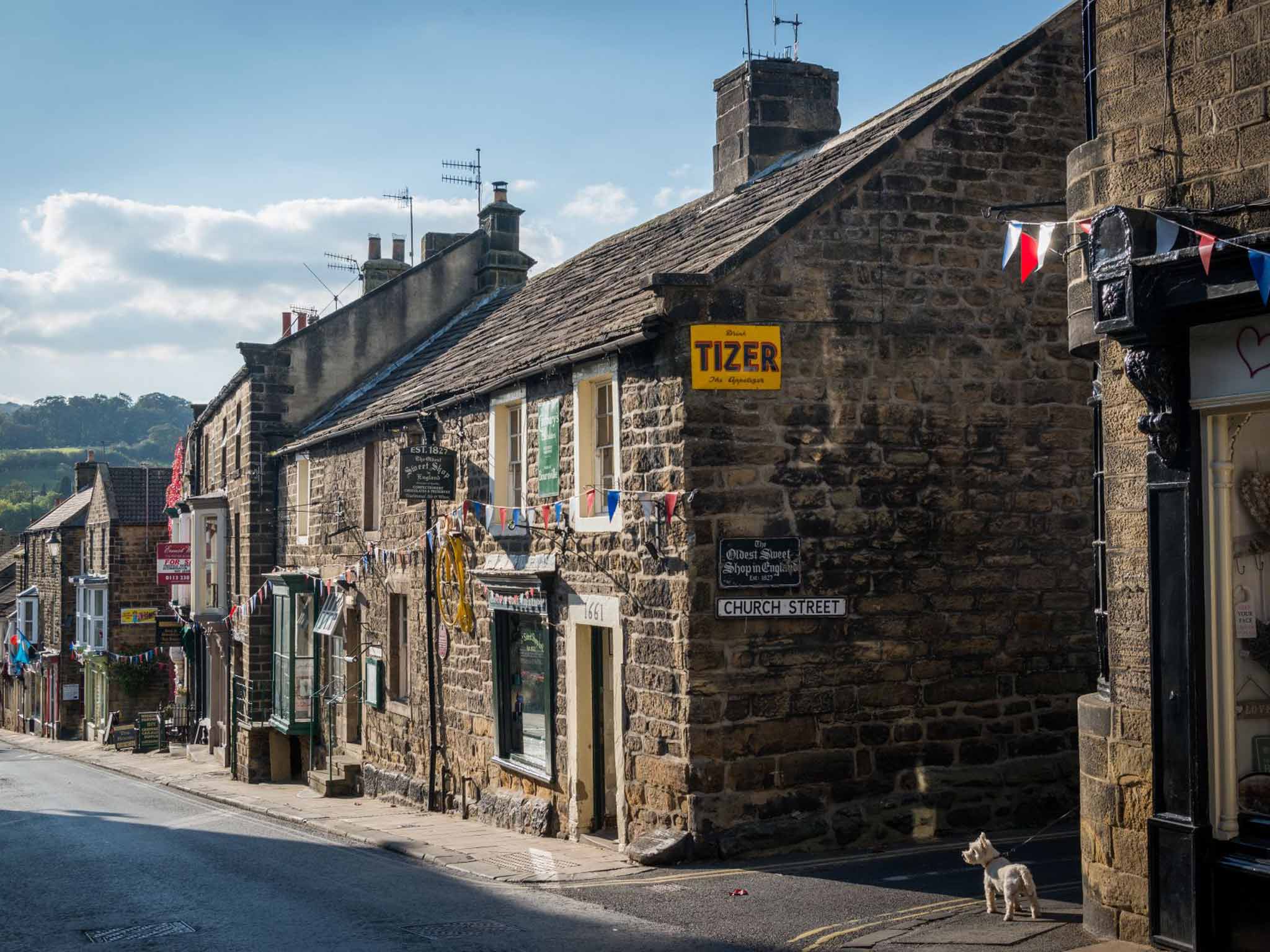North Yorkshire walk: Rock and roll over hill and dale
Beyond Nidderdale's tea rooms lies a dramatic, alien landscape – and a llama farm. Mark Rowe takes a hike of two halves

Your support helps us to tell the story
From reproductive rights to climate change to Big Tech, The Independent is on the ground when the story is developing. Whether it's investigating the financials of Elon Musk's pro-Trump PAC or producing our latest documentary, 'The A Word', which shines a light on the American women fighting for reproductive rights, we know how important it is to parse out the facts from the messaging.
At such a critical moment in US history, we need reporters on the ground. Your donation allows us to keep sending journalists to speak to both sides of the story.
The Independent is trusted by Americans across the entire political spectrum. And unlike many other quality news outlets, we choose not to lock Americans out of our reporting and analysis with paywalls. We believe quality journalism should be available to everyone, paid for by those who can afford it.
Your support makes all the difference.Resonant names abound as I approach Pateley Bridge. I pass through the hamlet of Lofthouse, which looks simply ancient: cottage windows are knee-high to the ground, or doors are positioned half-way between floor and roof, reached only by wooden staircases.
I'm in Nidderdale. Of all the dales and Pennine valleys that are stacked like pallets on top of one another from the Peak District to the Borders, this one somehow feels the most remote. It's vast, rugged, a long way from any sizeable town and escaped mainly by precipitous passes. Names of hamlets and villages – Smelthouses, Glasshouses – hint at an ageless tradition of industry.
As I get into the stride of my walk, the view takes in a decent slice of what makes Nidderdale tick. Walking up Pateley Bridge's high street, I follow a flight of steps by the church to the Panorama Walk. It's a steady hike, with the relentless incline of an escalator. The effort, though, is repaid as the skyline of Nidderdale gradually opens up.
The view is almost a cliché of the Dales, though too rugged for a chocolate-box cover: tumbling hillsides, a deep, rutted valley floor, a farmstead here, a run of trees on the skyline, an isolated church there. An unseen pheasant croaks, a raven jerkily flaps past. And everywhere, the landscape is criss-crossed by drystone walls. These walls climb up the steep flanks of the dale, standing on their tails, their angles almost perpendicular, as though paying homage to the contrails of aircraft overhead. In places these walls simply peter out, as though those who built them gave up, exhausted by their labours.

Until now, the route has shown me what Nidderdale looks like. From here on, it plunges into that landscape. The trail is now marked by the Nidderdale Way's fingerposts, a design-classic image of a curlew in flight. Like that bird, the path drops, rises, twists, tucks and turns on a sixpence. At times, high drystone walls shield the dale from me, and when they fall away I emerge with a different, disorienting view of crags and quarried hillsides. I take an unexpected llama farm in my stride.
Crossing a tributary of the river Nidd, I climb to an extraordinary landscape of singularly shaped outcrops. These are Brimham Rocks, a breathtaking ensemble of nature's handiwork. Over thousands of years, retreating glaciers, wind, and rain have created an alien landscape of brooding gritstone shapes that could pass for a giant's pottery studio. Many have been given names to reflect their shapes, such as the dancing bear, the gorilla, even the Smarties tube.
It's as though all the tors of Dartmoor and the Peak District have been gathered together. Standing in this open-air geology lesson, I read that what makes this landscape distinctive is at risk. Farmers are becoming elderly, and sons and daughters are less keen to pick up the keys to the tractor. In parallel, there is a decline in the skills and labour needed to maintain drystone walls. As they are neglected, ancient field patterns and hay meadows disappear with knock-on effects for upland birds.
My spirits are lifted as a red kite swoops up from behind one of the Brimham tors, its colours no longer dulled by winter but flashing in the stronger sun of spring. Leaving the rocks behind, it becomes clear this is the proverbial walk of two halves.
After the ruggedly disorienting climbs, twists and descents from Pateley Bridge, I'm on the downhill run. The path slithers muddily past a copse intriguingly named Adam's Ale, and I contour along a bridleway that drops down to connect this walk to the River Nidd.

I sit on stones by a small tributary before arriving at the banks of the river, wide and flowing fast.
The riverbank path back to the village is level and gentle, a soft landing with which to end the walk. I cross a footbridge that, at 15 metres, seems extraordinarily high, as though to accommodate the rigging of unlikely passing ocean-going tall ships.
Later, I pass under a derelict railway viaduct, its arches abruptly cut short, leaving clear air across the water. A lovely, moss covered islet follows, bolstered by storm-flattened trees, that splits the Nidd briefly in two. A stouter bridge traverses the Nidd and leads into Glasshouses, where the village's former twine mill retains its grandeur.
A final contrasting landscape separates my walk's end from the tea shops of Pateley Bridge. Standing water is at a premium in this limestone country, where most water eventually finds its way underground or rushes towards the North Sea. Natural lakes are rare, but here, minutes from the town, is a classic floodplain meadow, where rushes rise from small mires at the side of the Nidd. A moorhen prances across a natural land bridge of reeds, rooting around for bugs. It's an oddly serene setting for a walk that's taken in such a rugged landscape.
Travel essentials
Start/Finish: Pateley Bridge
Distance: 9 miles/15km
Time: Four hours
OS Map: Explorer 298 Nidderdale
Directions: The circular walk can be downloaded and printed at bit.ly/PateleyBridge.
Getting there
The nearest mainline station is Harrogate, served by Virgin Trains East Coast and Northern Rail (08457 48 49 50; nationalrail.co.uk). Bus number 24 runs from Harrogate to Pateley Bridge (harrogatebus.co.uk)
Staying there
Mark Rowe stayed at Agra Cottage, near Masham, booked through Gorgeous Cottages (0844 736 6276; gorgeouscottages.com) which costs from £450 for a three-night stay.
More information
Join our commenting forum
Join thought-provoking conversations, follow other Independent readers and see their replies
Comments